A data architect wants to combine data on present and historic sales performance. The historic data is stored in a de-normalized archive, and the present data is maintained in a database. The output must be contained in a single table.
Which script should the data architect use?
A)
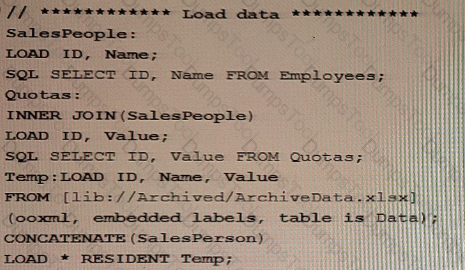
B)
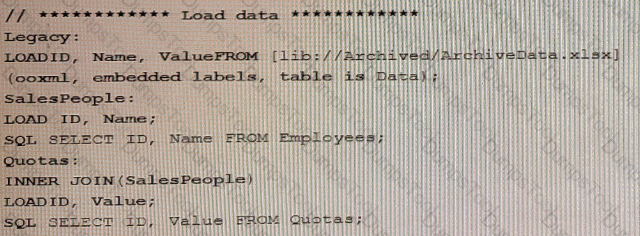
C)
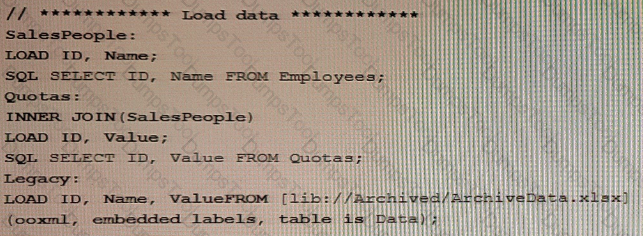
D)
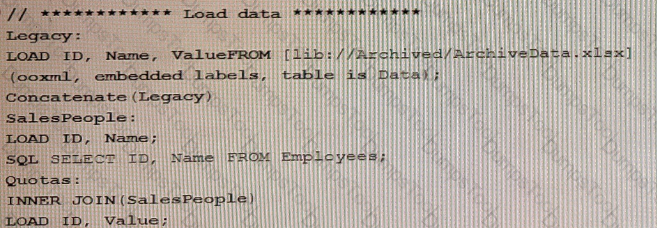
Refer to the exhibit.
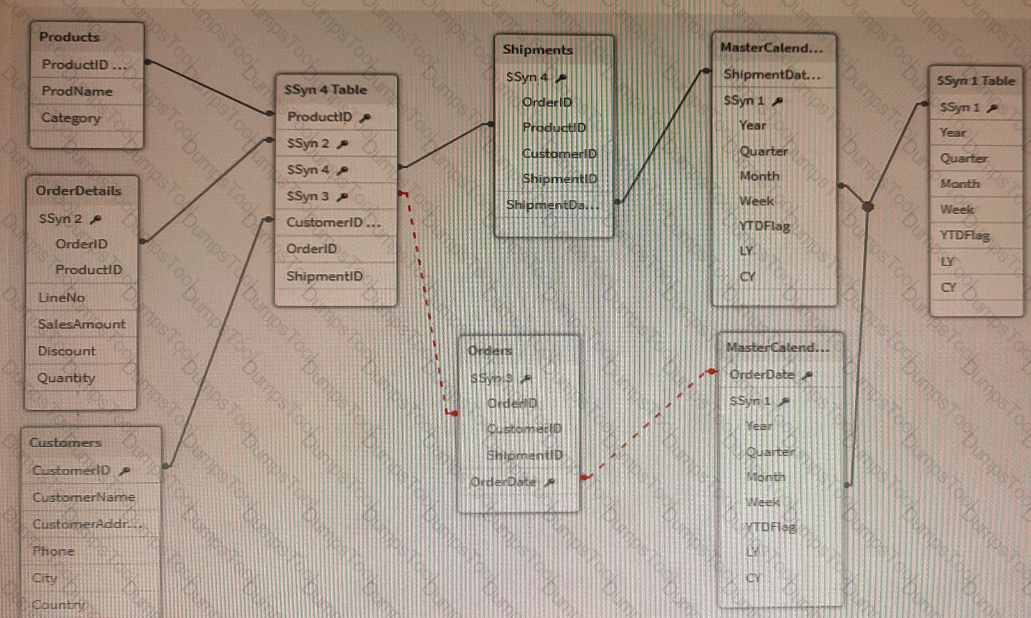
A data architect is working on a Qlik Sense app the business has created to analyze the company orders and shipments. To understand the table structure, the business has given the following summary:
• Every order creates a unique orderlD and an order date in the Orders table
• An order can contain one or more order lines one for each product ID in the order details table
• Products in the order are shipped (shipment date) as soon as tliey are ready and can be shipped separately
• The dates need to be analyzed separately by Year Month, and Quarter
The data architect realizes the data model has issues that must be fixed.
Which steps should the data architect perform?
A data architect needs to add the UnitCost field from the ProductCost table in the Dim_Products Table.
Which script code should the data architect use?
A)
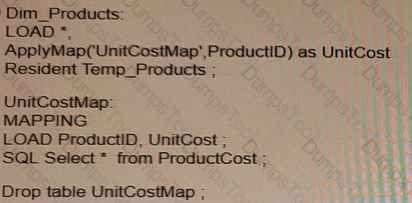
B)
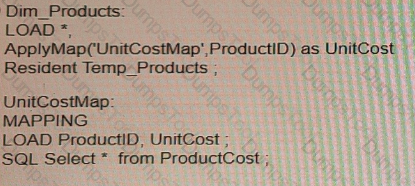
C)
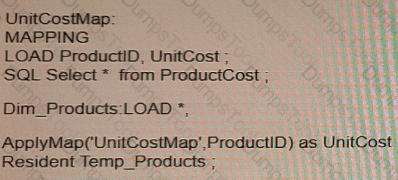
D)
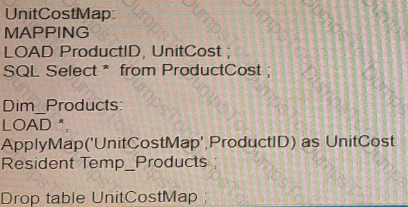
A data architect needs to develop multiple apps for various departments. More departments are requesting apps over time The company uses specific requirements for the number interpretation variables (e.g., ThousandSep, DecimalSep) found at the beginning of a LOAD script.
The data architect wants to reduce duplicate scripts but does not want to copy and paste the number interpretation variables each time new app is created. The data architect prefers to use the least amount of script in Qlik Sense.
How should the data architect meet these requirements?
A data architect plans to build an app that contains geographically diverse data that must be specific to user run-time selections. The source contains transactional data. The app must have minimal impact on already limited server resources.
Which approach should the data architect use?
A data architect completes development of a new app with two data sources Both data sources will also be used by other apps in the future The sources have different data refresh frequencies
• Source 1 Contains frequently updated data and must be refreshed hourly
• Source 2 Contains data that is transferred from a partner and must be refreshed weekly
Tasks must be created to load the data sources and make sure that the new app uses the most current data The data will be stored in two QVDs Which tasks should be created to meet these requirements'?